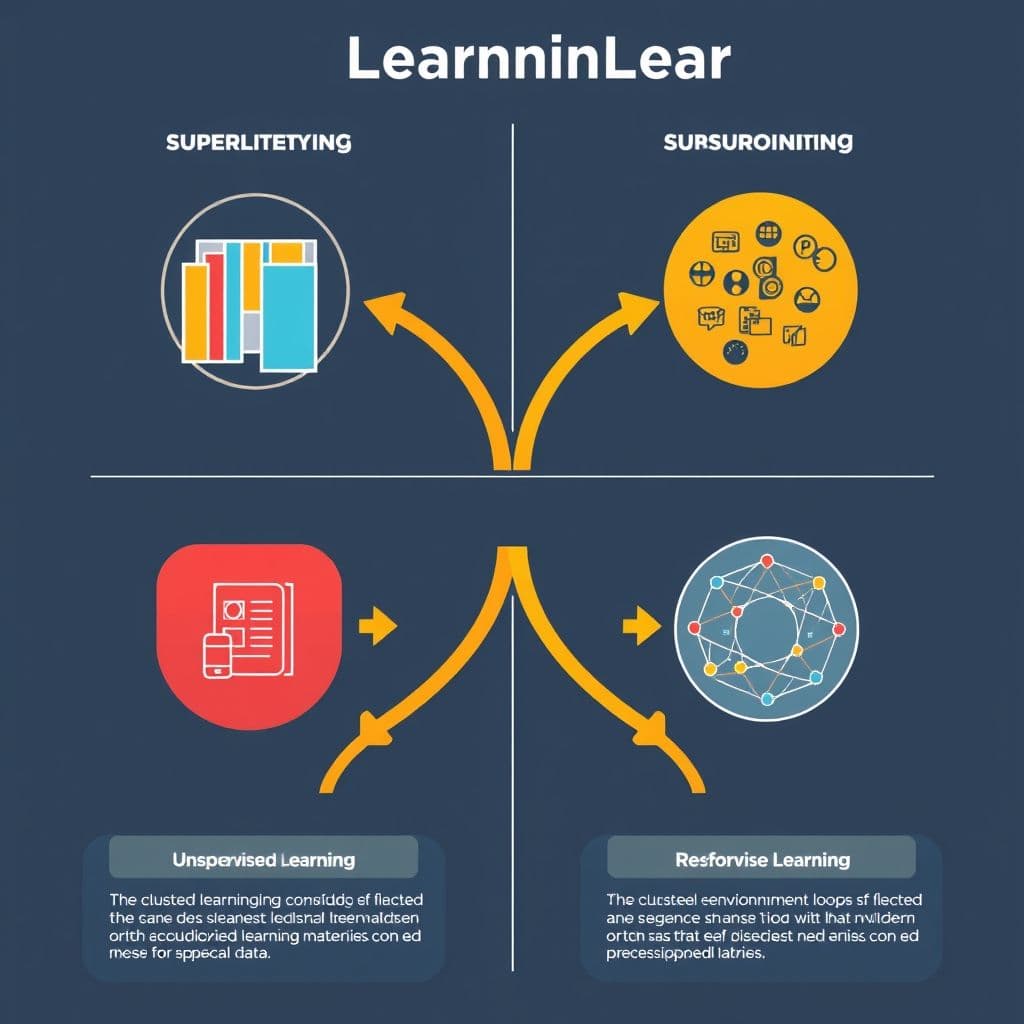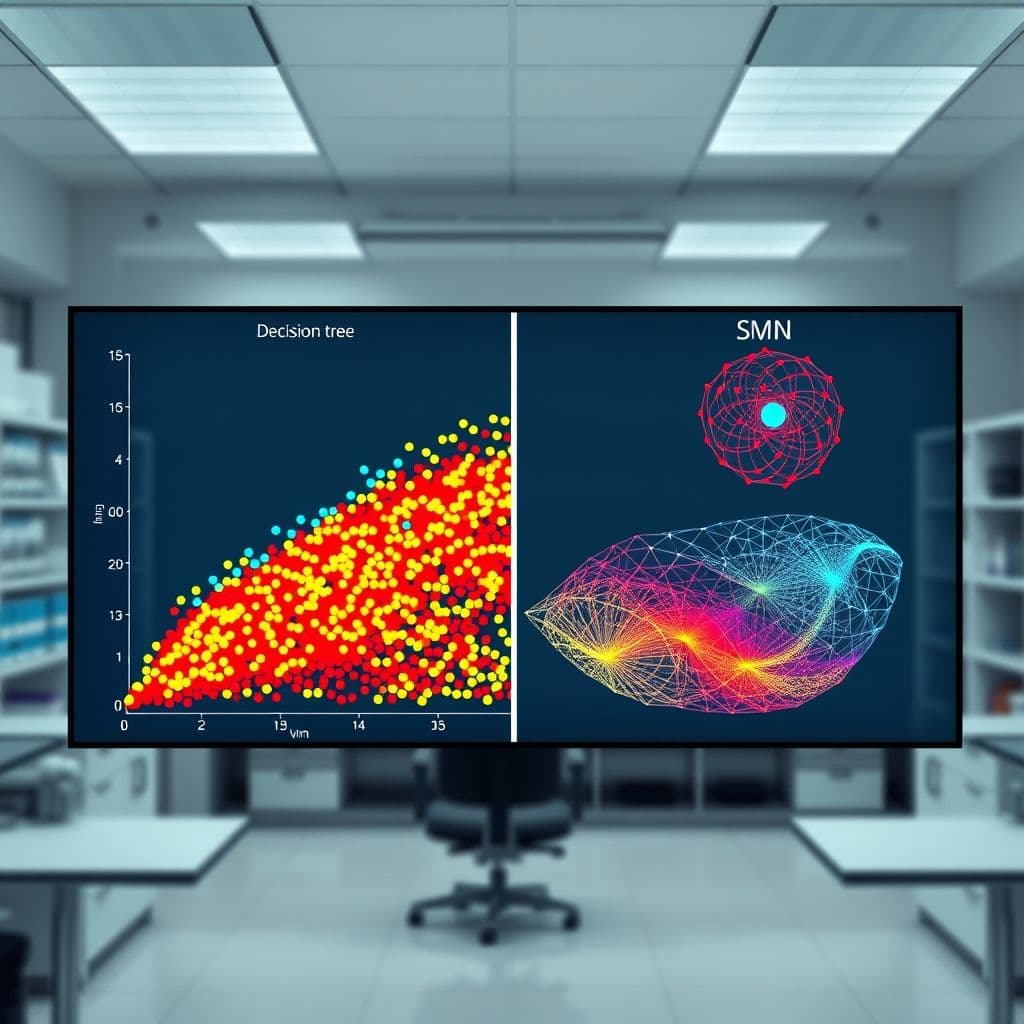Complete Machine Learning Engineering Guide: 7 Essential Steps to Master ML

Machine Learning Engineering has become one of the most sought-after skills in today's data-driven world. Whether you're looking to transition into AI, advance your current tech career, or simply understand how intelligent systems work, mastering ML engineering opens doors to incredible opportunities. This comprehensive guide breaks down the journey into 7 manageable steps, each building upon the previous one to create a solid foundation for your machine learning expertise. From understanding core concepts to deploying real-world solutions, you'll discover the roadmap that transforms beginners into confident ML practitioners. View original learning path
Step 1: Understand the Basics of Machine Learning
Before diving into code and algorithms, it's crucial to grasp the fundamental concepts that form the backbone of machine learning. Supervised learning involves training models on labeled data to make predictions, like predicting house prices based on features such as size and location. Unsupervised learning discovers hidden patterns in unlabeled data, such as customer segmentation or anomaly detection. Reinforcement learning teaches agents to make decisions through trial and error, powering game-playing AI and autonomous systems. Feature engineering, the art of selecting and transforming input variables, often determines model success more than algorithm choice. Finally, model evaluation ensures your solutions work reliably in the real world through metrics like accuracy, precision, and recall. Master these concepts first, as they'll guide every decision you make as an ML engineer.

Step 2: Learn Programming and Data Manipulation
Python has become the lingua franca of machine learning, and for good reason – its simplicity and extensive ecosystem make it perfect for ML workflows. Start with Python fundamentals: variables, loops, functions, and object-oriented programming. NumPy provides the mathematical foundation, offering efficient array operations that are essential for numerical computing. Pandas transforms you into a data manipulation wizard, allowing you to load, clean, and analyze datasets with just a few lines of code. Data cleaning often consumes 80% of an ML project's time, involving handling missing values, removing duplicates, and correcting inconsistencies. Data preprocessing prepares your data for algorithms through techniques like normalization, encoding categorical variables, and handling outliers. Practice with real datasets from sources like Kaggle or UCI Machine Learning Repository to build confidence in these essential skills.
Step 3: Dive into Machine Learning Algorithms
Now comes the exciting part – learning the algorithms that power intelligent systems. Linear regression provides the foundation for understanding relationships between variables, while logistic regression extends this to classification problems. Decision trees offer interpretable models that mirror human decision-making processes. Random forests combine multiple decision trees to create more robust predictions, demonstrating the power of ensemble methods. Support Vector Machines excel at finding optimal boundaries between classes, especially in high-dimensional spaces. K-Nearest Neighbors represents intuitive similarity-based learning, while Naive Bayes leverages probability theory for text classification and spam detection. Neural networks, inspired by the human brain, can learn complex patterns through interconnected layers of artificial neurons. Gradient boosting iteratively improves predictions by learning from previous models' mistakes. Start by implementing these algorithms from scratch using NumPy to understand their inner workings, then leverage libraries like scikit-learn for practical applications.

Step 4: Understand Model Evaluation and Validation
Building a model is only half the battle – evaluating its performance correctly is equally important. The train-test split prevents overfitting by keeping a portion of data unseen during training. Cross-validation provides more robust estimates by repeatedly testing on different data subsets, reducing the impact of random variations. Understanding evaluation metrics is crucial: accuracy measures overall correctness, precision indicates how many positive predictions were actually correct, recall shows how many actual positives were found, and F1 score balances precision and recall. Recognizing overfitting (memorizing training data) and underfitting (failing to capture patterns) helps you adjust model complexity appropriately. Hyperparameter tuning optimizes model configuration through techniques like grid search and random search, often dramatically improving performance. Remember, a model that performs well on training data but fails on new data is useless in practice.
Step 5: Explore Advanced Topics in Machine Learning
As you progress, advanced topics unlock more sophisticated applications. Dimensionality reduction techniques like PCA and t-SNE help visualize high-dimensional data and combat the curse of dimensionality. Ensemble learning combines multiple models to achieve better performance than any single model, as demonstrated by successful Kaggle competition approaches. Deep learning uses neural networks with many layers to automatically learn hierarchical features, revolutionizing computer vision and natural language processing. Speaking of NLP, this field enables machines to understand and generate human language, powering chatbots and translation services. Recommender systems personalize user experiences by predicting preferences based on past behavior. Time series analysis forecasts future values from sequential data, crucial for financial modeling and demand prediction. Transfer learning leverages pre-trained models to solve new problems with limited data, dramatically reducing training time and improving results.
Step 6: Gain Practical Experience with Real-World Projects
Theory without practice is incomplete – real-world projects bridge the gap between knowledge and expertise. Data collection and preparation often present unexpected challenges: APIs change, data formats vary, and quality issues emerge. Feature selection becomes an art as you identify which variables truly matter for your specific problem. Model training and evaluation require patience and iteration, as you experiment with different approaches and fine-tune parameters. Deployment transforms your model from a notebook experiment into a production system that serves real users, involving considerations like latency, scalability, and maintenance. Monitoring ensures your deployed model continues performing well as data patterns evolve over time. Iterative improvement acknowledges that machine learning is an ongoing process, not a one-time solution. Start with simple projects like predicting house prices or classifying images, then gradually tackle more complex challenges that mirror industry applications.

Step 7: Stay Updated and Continuously Learn
Machine learning evolves rapidly, making continuous learning essential for staying relevant. Reading research papers from conferences like NeurIPS and ICML exposes you to cutting-edge techniques before they become mainstream. Participating in Kaggle competitions provides hands-on experience with diverse datasets and challenges, while learning from top performers' approaches. Following machine learning blogs and forums like Towards Data Science, ML Twitter, and Reddit's MachineLearning community keeps you informed about industry trends and practical tips. Attending conferences and workshops offers networking opportunities and deep dives into specialized topics. Most importantly, experimenting with new techniques and algorithms through personal projects maintains your curiosity and skills. Set aside time weekly for learning something new, whether it's a research paper, online course, or implementation exercise. The field's rapid pace means today's cutting-edge technique may be tomorrow's standard tool.
Conclusion
Mastering machine learning engineering is a journey that combines mathematical understanding, programming skills, and practical experience. These seven steps provide a structured path from curious beginner to confident practitioner. Remember that each step builds upon the previous ones – rushing through fundamentals to reach advanced topics often leads to gaps that become problematic later. Focus on understanding concepts deeply rather than memorizing syntax, practice with real datasets regularly, and don't be afraid to experiment and make mistakes. The field offers endless opportunities for those willing to invest the time and effort. Whether your goal is to build recommendation systems, develop autonomous vehicles, or create the next breakthrough in AI, this roadmap equips you with the foundation to achieve your machine learning ambitions.
Frequently Asked Questions
- How long does it take to master machine learning engineering?
- Becoming proficient typically takes 6-12 months of consistent study and practice, with 10-15 hours per week. Mastery is an ongoing process that continues throughout your career as the field evolves rapidly.
- What are common mistakes beginners make in machine learning?
- Common pitfalls include jumping to complex algorithms without understanding basics, neglecting data quality, overfitting models, ignoring proper evaluation practices, and focusing too much on accuracy while ignoring other important metrics.
- Do I need a strong mathematics background for machine learning?
- While deep mathematical knowledge helps with advanced topics, you can start with basic statistics and linear algebra. Many successful ML engineers learn mathematics concepts as needed for specific applications.
- Which programming language is best for machine learning?
- Python is the most popular choice due to its simplicity and extensive libraries. R is also excellent for statistics-heavy work, while languages like Julia and Scala are gaining traction for specific use cases.





